Sprint Planning Meeting: Tools and Templates
Be prepared and kick off each sprint effectively.
Sprints are fundamental to the Agile product management workflow. A sprint is a short, time-boxed period (usually a month or a week), during which a set amount of work has to be completed. It's a popular technique used in the Scrum and Agile methodologies to break up larger projects into more manageable pieces.
The better prepared you are before a sprint, the more likely you are to hit your goals – this is what sprint planning is for. Let's dive deeper into what sprint planning is and how to do it right.
- What is sprint planning?
- Sprint planning tools
- How to run a sprint planning meeting
- Sprint planning tips
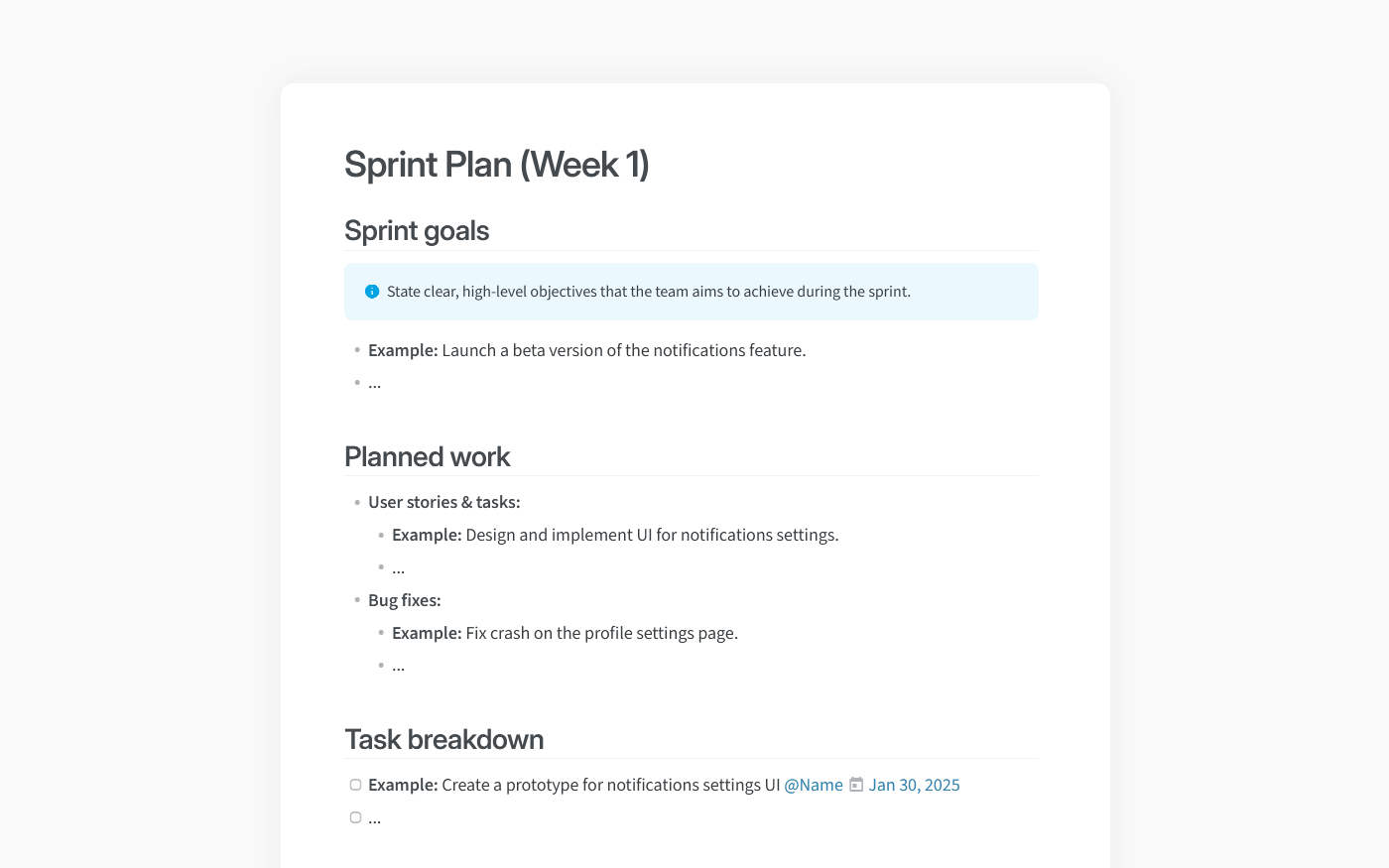
What is sprint planning?
Sprint planning is a working session at the beginning of each sprint, during which the team agrees to complete a set of product backlog items. Simply put, a sprint planning meeting initiates every sprint by laying out the work that needs to be done. It's led by the product owner and attended by the entire development team.
The Scrum framework suggests that sprint planning should be strictly time-boxed. The team should set an upper time limit for each planning session — usually no more than one or two hours for every week of sprint time.
A successful sprint planning meeting will yield two important items:
The sprint goal: A summary of what you plan to accomplish during the sprint.
The sprint backlog: A list of user stories and backlog items the team has agreed to work on in the upcoming sprint.
Regular sprint planning sessions allow the team to frequently review the product backlog and identify the most strategically advantageous development work to prioritize. It's also a great opportunity for the team members to ask questions, discuss issues, and celebrate accomplishments.
Sprint planning plays a vital role in the product development workflow of many teams. As Julian Borg, Chief Product Officer at remberg, notes: "To successfully develop our remberg XRM and remberg AI Copilot, sprint planning is crucial for our Product, Design, and Engineering organization. It aligns all stakeholders within and across teams on clear goals, ensuring effective communication and cohesive teamwork."
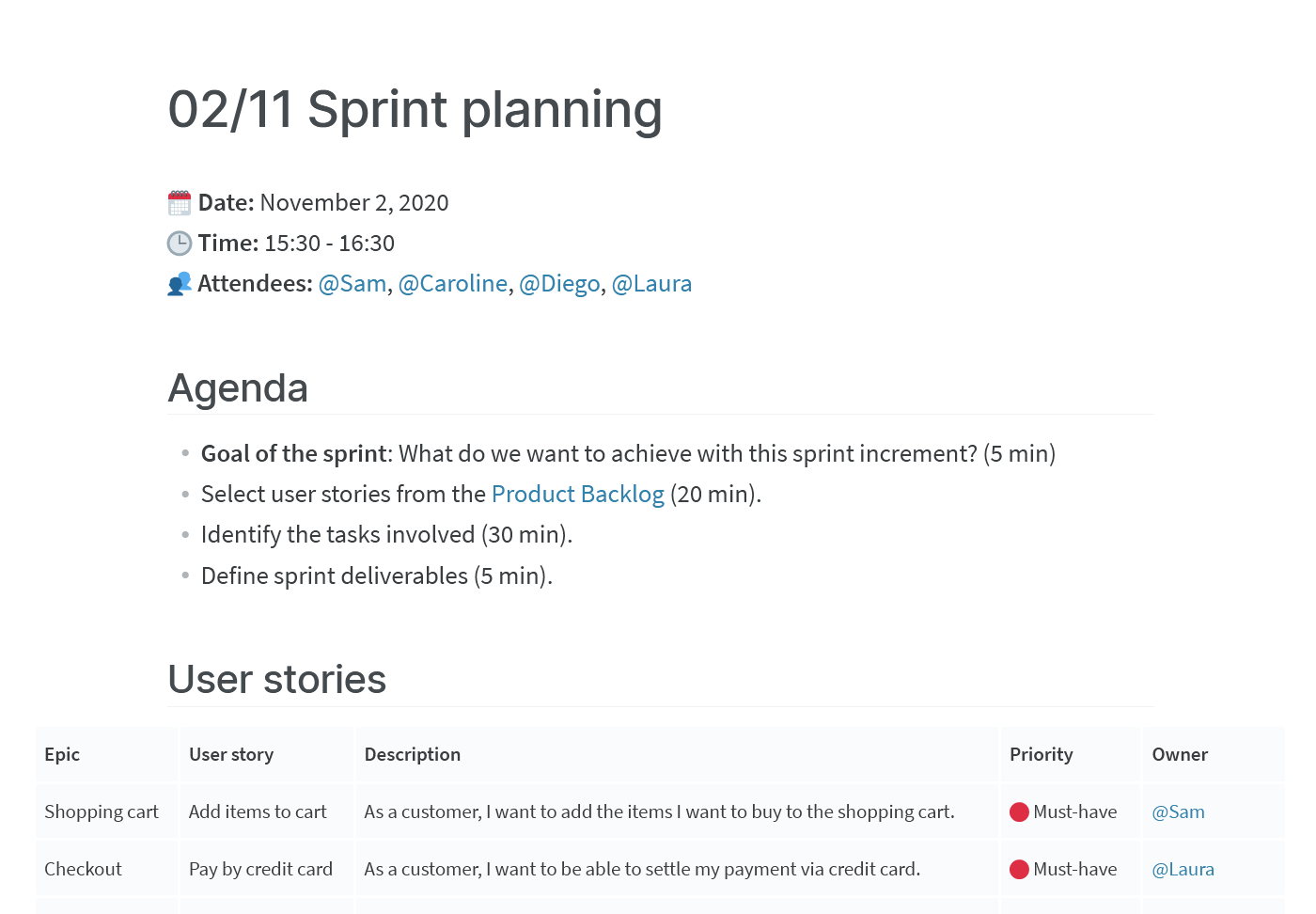
Sprint planning tools
There are dozens of sprint planning tools you can choose from. Some of them are fairly basic, while others are packed with complex features and customization options. There is no one-size-fits-all, and depending on your team's unique workflow and requirements, a different solution may be a better fit.

A sprint is quite commonly planned using a Kanban board. The Kanban system makes it easy to limit the amount of work in progress, so that your team's workload matches its capacity.
A Kanban board can be a literal physical board with sticky notes. Such a board is simple to set up and can be a great way for co-located teams to handle sprint planning. Online Kanban board software such as Nuclino or apps like Trello, however, can make it much easier to keep track of your backlog and share your sprint plans with your team, wherever they are.
Nuclino is a unified workspace where you can not only plan your sprints, but also build your internal knowledge base, collaborate on internal documentation, onboard new employees, take meeting minutes, communicate asynchronously, and bring all your team's work together in one place.
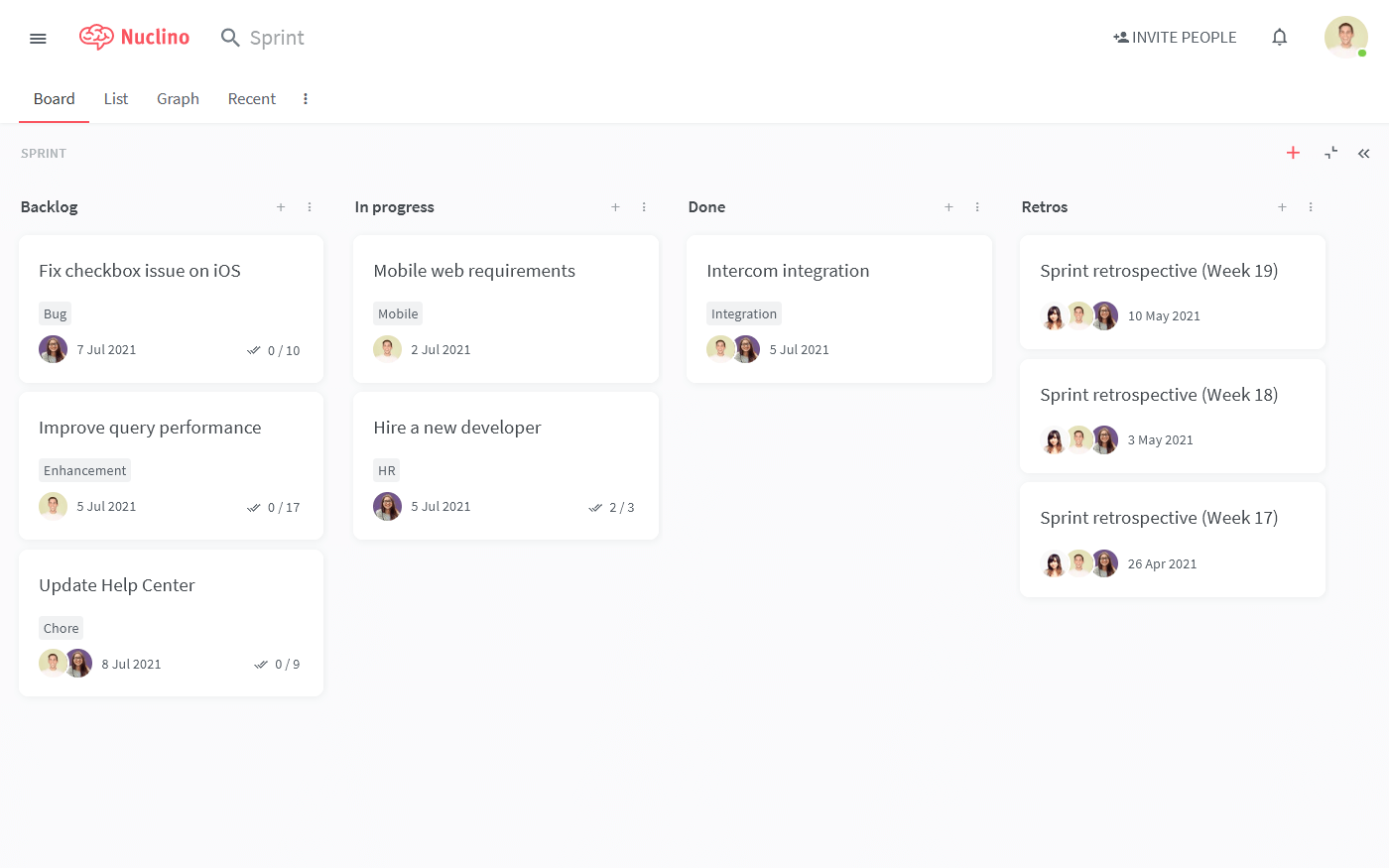
Many sprint planning tools allow you to create custom fields to track additional information about each backlog item, such as its priority, epic, required effort, and more – anything that's important for your workflow.
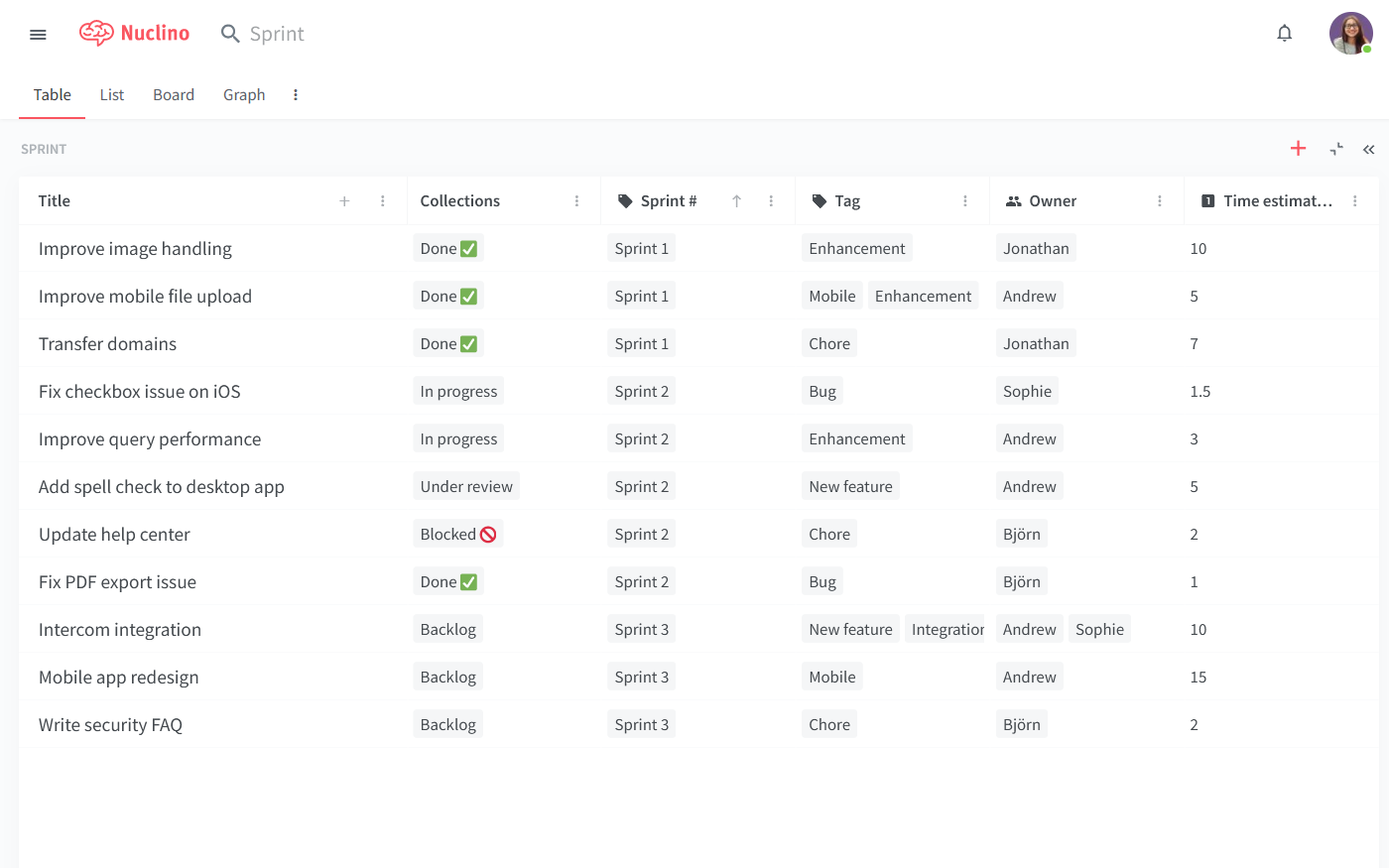
How to run a sprint planning meeting
During a sprint planning meeting, the participants – the product owner, scrum master, and the developers – get together to accomplish several objectives. The meeting usually follows the following pattern:
Everyone jointly selects which items to prioritize from the product backlog.
The developers evaluate the technical aspects of each item and estimate how feasible it would be to develop them during the current sprint.
The user stories are broken down into individual development and testing tasks.
The tasks are assigned to individual team members.
At the end of the sprint, the team often runs a sprint review and sprint retrospective to review the results and reflect on what went well and what didn't. These learnings are then applied during the next sprint planning.
Sprint planning tips
Preparing for an upcoming sprint doesn't require your team to account for every minute of it. However, you do need to work out several crucial details.
Every team has its own sprint planning process – some prefer a more formalized and structured approach, while other teams plan their sprints in a more informal and flexible manner. However you choose to approach the process, some best practices will always apply.
Groom the backlog before the sprint planning meeting
As is the case with every meeting, coming prepared is the best way to ensure no time gets wasted. Having a well-groomed and prioritized backlog in advance is a great way to save time during sprint planning meetings and have fewer discussions on individual sprint items. If needed, get your team together before the sprint planning meeting to go through the backlog together and refine it.
Prepare an agenda
A meeting agenda is the best way to stay focused and make good use of the time you have. Make sure to share it in advance with all participants.
Set a time limit
Make sure that your sprint planning session is always strictly time-boxed. The Scrum framework suggests two hours for every week of sprint time.
Define the goals and success metrics
Make sure your team is aligned on the sprint goal – what you want to have delivered by the end of the sprint. It helps keep everyone moving forward toward a common destination and explains the why behind every Increment.
Know the capacity but don't fill it
Be aware of everyone's schedule and availability for the duration of the sprint and leave some buffer room for any unforeseen issues that may come up. Overestimating your team's capacity or velocity and pulling in too many stories is a sure way to set yourself up for failure.
Ensure the definition of "Done" is clear
Make sure everyone on the development team is on the same page with regard to the definition of "ready". Clarity on this issue will help the team deliver the planned work in a more organized and predictable way.
Document the decisions
Finally, whatever decisions and plans you make during the sprint planning meeting needs to be documented. Some people may have to miss the meeting, and the attendees may have different recollections of what was agreed on and why. Having a clear decision log will help you avoid misunderstandings down the road. Make sure you store this documentation in one central and easily accessible place, such as your internal wiki or your internal documentation tool.
Sprint planning template
To make sure your sprint planning goes as smoothly as possible, it's best to pick a specific process and stick to it. Using a sprint planning template is a great way to avoid having to reinvent the wheel every time and ensure consistency. Here's an example of what such as template could look like:
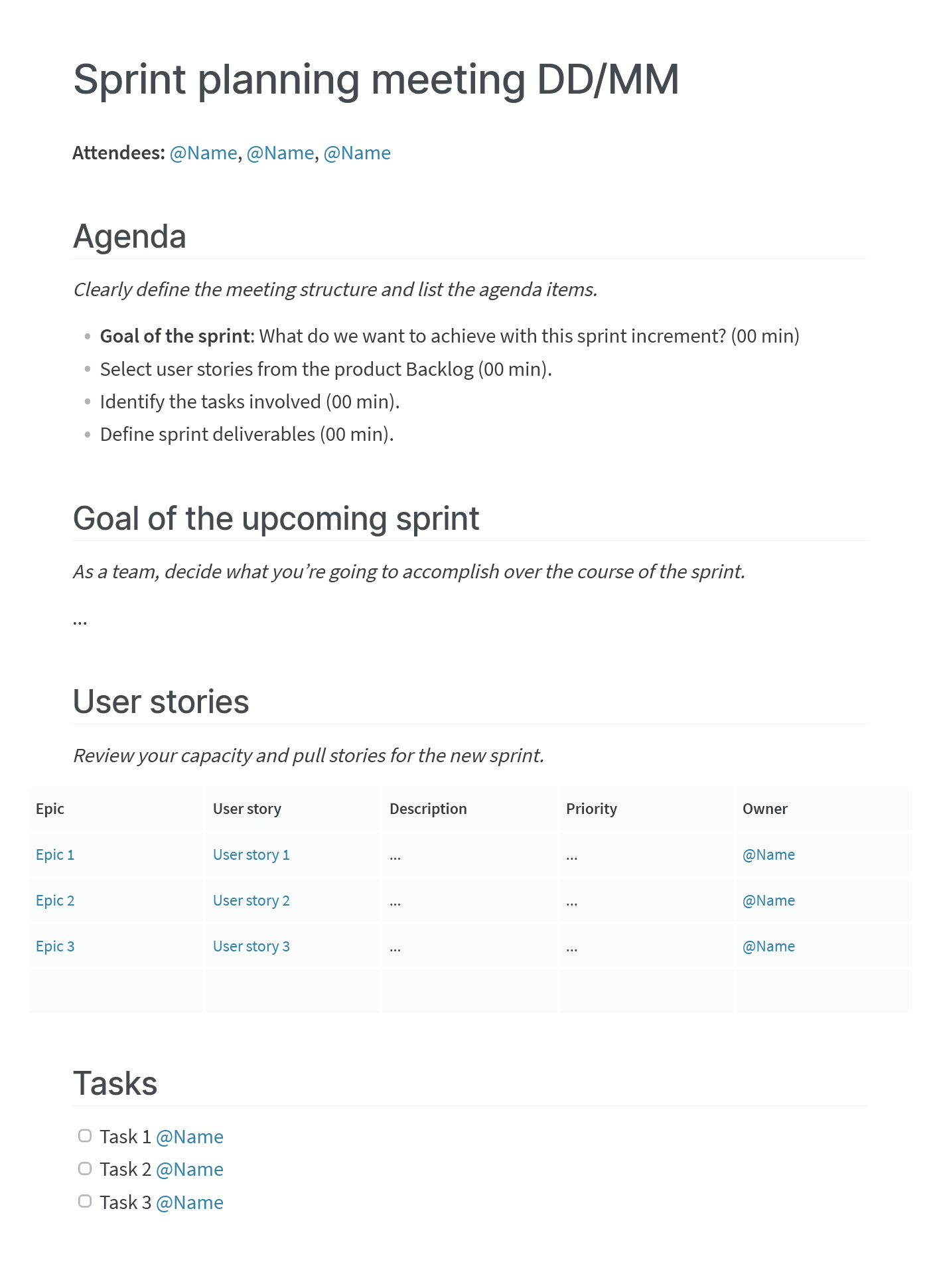
Sprint planning can be a highly effective tool for moving product development forward. It's one of the easiest ways to get the whole team aligned on what needs to be done, when, and by whom. Whether your company follows the Scrum framework or not, it's worth making sprint planning part of your company culture and workflow.
Nuclino: Your team's collective brain
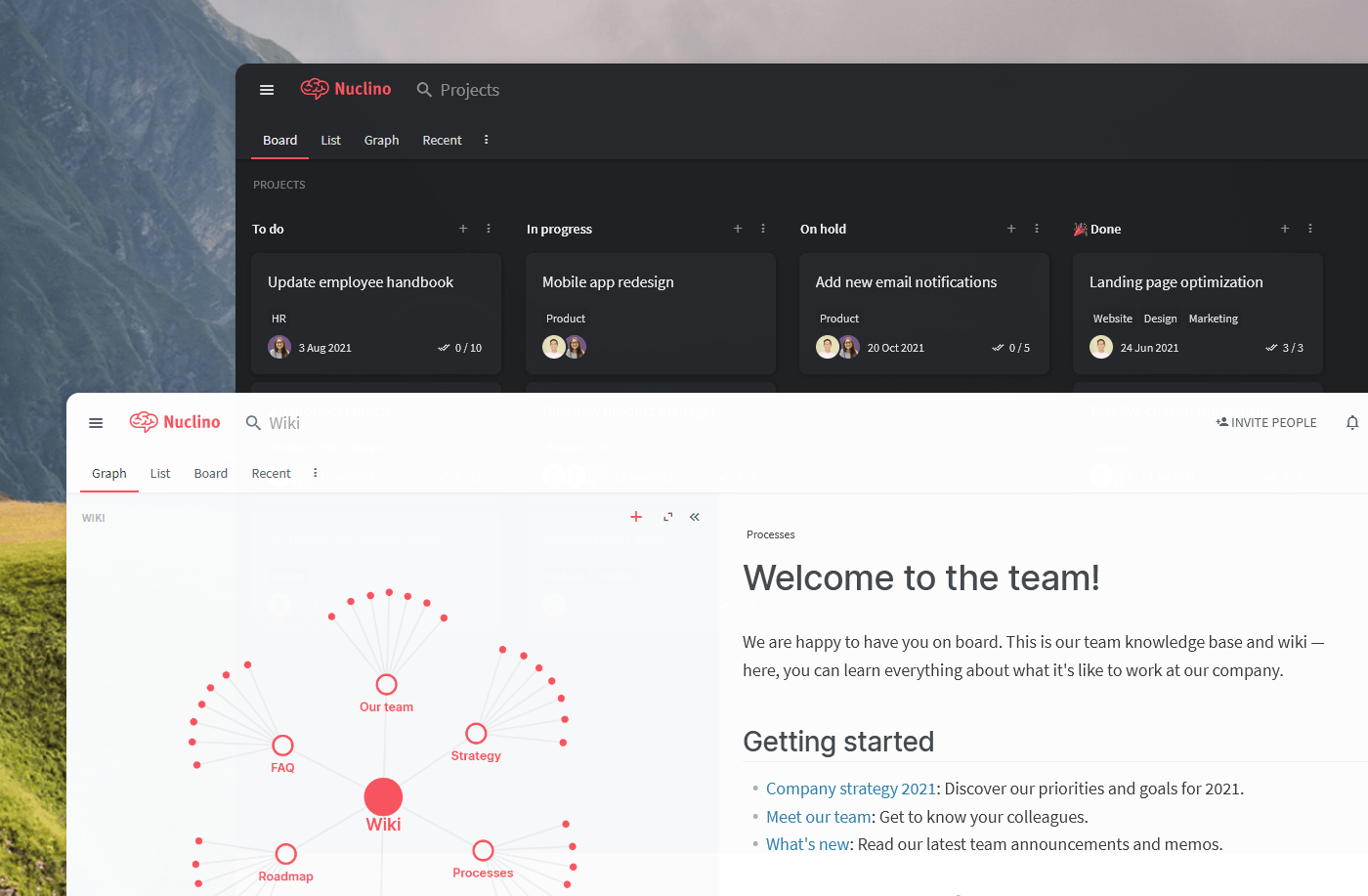
Nuclino brings all your team's knowledge, docs, and projects together in one place. It's a modern, simple, and blazingly fast way to collaborate, without the chaos of files and folders, context switching, or silos.
Create a central knowledge base and give your team a single source of truth.
Collaborate in real time or asynchronously and spend less time in meetings.
Manage and document your projects in one place without losing context.
Organize, sort, and filter all kinds of data with ease.
Integrate the tools you love, like Slack, Google Drive, Figma, Lucidchart, and more.
Ready to get started?
